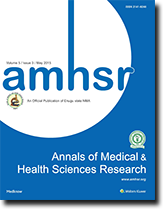

Background: High dose antipsychotic prescribing is common in psychiatric care, despite a lack of its benefit from research evidence. While several studies have explored the prevalence and factors associated with high dose antipsychotic prescribing, no such report has emanated from a developing country like Nigeria. Aim: The aims of this study were to determine the prevalence of high dose prescribing among inâ�?�?�?�?patients at a tertiary psychiatric hospital and to determine the pattern of antipsychotic drugs prescribed. Materials and Methods: An audit of inâ�?�?�?�?patients at a regional tertiary psychiatric facility was carried out. We examined case notes and conducted oral interviews where necessary, on all patients receiving antipsychotics using a proforma designed for the study. Results: The prevalence of high dose prescribing was 38% (65/171) using a prescribed daily dose/defined daily dose ratio of 1.5. The rate of antipsychotic polypharmacy was 7% (12/171). The atypical antipsychotic, olanzapine was the most commonly prescribed antipsychotic in monotherapy. Predictors of high dose prescribing were diagnoses (P = 0.04), polypharmacy (P = 0.04), a history of previous inâ�?�?�?�?patient care (P = 0.02), and use of anticholinergic drugs (P = 0.01). Conclusions: High dose prescribing was common among inâ�?�?�?�?patients audited. Further studies are needed to examine factors that promote “high dose” prescribing.
Select your language of interest to view the total content in your interested language
Annals of Medical and Health Sciences Research received 24805 citations as per google scholar report
 The Annals of Medical and Health Sciences Research is a monthly multidisciplinary medical journal.
The Annals of Medical and Health Sciences Research is a monthly multidisciplinary medical journal.